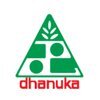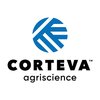
i
Gharda Chemicals Limited
Filter interviews by
Gharda Chemicals Limited Junior Production Officer Interview Questions, Process, and Tips
Gharda Chemicals Limited Junior Production Officer Interview Experiences
4 interviews found

(1 Question)
- Q1. Technical and experience about chemical engineering
(1 Question)
- Q1. About salary and benefits
I applied via Referral and was interviewed before Oct 2022. There were 3 interview rounds.
(1 Question)
- Q1. What is Normality, Molarity and malality
- Ans.
Normality, Molarity, and Molality are different ways to express the concentration of a solution.
Normality is the number of equivalents of a solute in a liter of solution.
Molarity is the number of moles of solute in a liter of solution.
Molality is the number of moles of solute per kilogram of solvent.
(1 Question)
- Q1. Equipment used and chemicals handling
(1 Question)
- Q1. Are you willing do work
Interview Preparation Tips
I applied via Referral and was interviewed in Sep 2019. There were 3 interview rounds.
Interview Questionnaire
6 Questions
- Q1. About Permit system,safety.
- Q2. What is LEL and UEL?
- Ans.
LEL stands for Lower Explosive Limit and UEL stands for Upper Explosive Limit.
LEL is the lowest concentration of a flammable substance in air that can ignite and sustain combustion.
UEL is the highest concentration of a flammable substance in air that can ignite and sustain combustion.
The range between LEL and UEL is known as the flammable range or explosive range.
Operating within the flammable range can lead to fire or...
- Q3. What is vacuum and how it creat?
- Ans.
Vacuum is a space devoid of matter or air. It is created when all the air or matter is removed from a given space.
Vacuum is a state of low pressure or absence of matter.
It is created by removing all the air or matter from a space.
Vacuum can be artificially created using vacuum pumps.
Examples of vacuum include the vacuum inside a vacuum cleaner or the vacuum of space.
- Q4. Types of pumps
- Ans.
Types of pumps include centrifugal pumps, reciprocating pumps, and rotary pumps.
Centrifugal pumps use centrifugal force to move fluids.
Reciprocating pumps use a piston or plunger to create pressure.
Rotary pumps use rotating mechanisms to move fluids.
Other types of pumps include diaphragm pumps, gear pumps, and peristaltic pumps.
- Q5. ETP parameters
- Q6. Boiling point,flash point,TLV,vacuum range
Interview Preparation Tips
Interview Questionnaire
4 Questions
- Q1. 1. troubleshooting 2. vacuum system. 3. The processes from the previous company.
- Q2. 1. molecular weight 2. mole 3. Some solvent properties.
- Q3. 1. introduction 2. strong and weak point 3. Family background 4. My goal
- Q4. 1. Mathematical
Gharda Chemicals Limited interview questions for designations
Interview questions from similar companies

I applied via Recruitment Consultant and was interviewed in Mar 2020. There were 3 interview rounds.
Interview Questionnaire
2 Questions
- Q1. Difference between organic chemistry and inorganic chemistry?
- Ans.
Organic chemistry deals with carbon-based compounds while inorganic chemistry deals with non-carbon-based compounds.
Organic chemistry involves the study of hydrocarbons, alcohols, carbohydrates, proteins, and nucleic acids.
Inorganic chemistry involves the study of metals, minerals, and non-carbon-based compounds like water, salts, and acids.
Organic compounds are generally covalently bonded while inorganic compounds can...
- Q2. Asked about various pump
Interview Preparation Tips

I applied via Campus Placement and was interviewed in Jul 2021. There was 1 interview round.
Interview Questionnaire
2 Questions
- Q1. Your strength
- Q2. Your family background
Interview Preparation Tips

I applied via Walk-in and was interviewed before Jun 2020. There were 3 interview rounds.
Interview Questionnaire
8 Questions
- Q1. What is refulx ratio, and explain?
- Ans.
Reflux ratio is the ratio of the amount of reflux to the amount of distillate in a distillation column.
Reflux ratio is an important parameter in distillation processes.
It is defined as the ratio of the amount of liquid returned to the column as reflux to the amount of liquid removed as distillate.
A high reflux ratio results in a higher purity of the distillate, but also requires more energy to maintain.
Reflux ratio can...
- Q2. R=f/d
- Ans.
R=f/d is the formula for calculating resistance.
R is the resistance of the material
f is the force applied to the material
d is the distance over which the force is applied
The formula is commonly used in physics and engineering
Example: calculating the resistance of a wire
- Q3. What is loop ? And explain
- Ans.
A loop is a programming construct that repeats a set of instructions until a specific condition is met.
Loops are used to automate repetitive tasks.
There are three types of loops: for, while, and do-while.
For loop is used when the number of iterations is known.
While loop is used when the number of iterations is unknown.
Do-while loop is used when the loop must execute at least once.
Example: for(int i=0; i<10; i++) { //co
- Q4. Open loop , close loop, case cade loop, split rang controlar,
- Q5. What is f/o and F/c? Explain
- Ans.
F/o and F/c are aviation terms used to refer to the first officer and flight crew respectively.
F/o stands for first officer, who is the second-in-command of the aircraft and assists the captain in flying the plane.
F/c stands for flight crew, which includes all the members of the crew who are responsible for the safety and comfort of the passengers.
The first officer is also known as the co-pilot and is responsible for m...
- Q6. Faild to open and faild to closed
- Q7. Previous company plant what is responsibility
- Q8. Distillation column work
- Ans.
Distillation column is used to separate components of a mixture based on their boiling points.
It works on the principle of vapor-liquid equilibrium.
The mixture is heated and vaporized in the column.
The vapor rises and condenses at different heights based on their boiling points.
The condensed liquid is collected in trays or plates.
The separated components are then collected from different trays.
It is commonly used in th
Interview Preparation Tips

Interview Questionnaire
4 Questions
- Q1. What is normality?
- Ans.
Normality refers to the state of being normal or typical.
Normality is a statistical concept used to describe the distribution of data.
It is often represented by a bell-shaped curve, with the majority of data falling within one standard deviation of the mean.
Normality is important in quality control and process improvement, as deviations from normality can indicate problems in a system.
In chemistry, normality refers to ...
- Q2. Definatiin of ph?
- Ans.
pH is a measure of the acidity or basicity of a solution.
pH stands for 'potential of hydrogen'
It is measured on a scale of 0-14
A pH of 7 is neutral, below 7 is acidic, and above 7 is basic
pH is important in many industries, including agriculture, medicine, and manufacturing
- Q3. How to prepare molar naoh solution?
- Ans.
To prepare molar NaOH solution, dissolve the required amount of NaOH in distilled water and adjust the volume to the desired concentration.
Calculate the required amount of NaOH using the formula: mass = molarity x volume x molecular weight
Weigh the calculated amount of NaOH using a balance
Dissolve the NaOH in distilled water in a volumetric flask
Add distilled water to the flask to reach the desired volume
Mix the soluti
- Q4. What is reflux ratio?
- Ans.
Reflux ratio is the ratio of the liquid reflux to the distillate produced in a distillation column.
It is an important parameter in distillation processes.
It determines the efficiency of the distillation column.
A higher reflux ratio results in a higher purity of the distillate.
Reflux ratio can be adjusted by changing the amount of reflux liquid or the distillate flow rate.
It is calculated as the ratio of the reflux liqu
Interview Preparation Tips

I applied via Recruitment Consulltant and was interviewed in Oct 2022. There were 2 interview rounds.

(2 Questions)
- Q1. What's JSA, UEL,LEL, MSDS, SCBA,
- Ans.
JSA - Job Safety Analysis, UEL - Upper Explosive Limit, LEL - Lower Explosive Limit, MSDS - Material Safety Data Sheet, SCBA - Self Contained Breathing Apparatus
JSA is a process of identifying potential hazards and risks associated with a job or task
UEL and LEL are the upper and lower limits of a gas or vapor concentration that can cause an explosion
MSDS is a document that provides information on the properties and haz...
- Q2. Why u change job, tell about our company
- Ans.
I changed jobs to explore new opportunities and challenges. Our company is a leading manufacturer in the industry with a strong reputation for quality and innovation.
I was seeking new challenges and growth opportunities
I was attracted to the company's strong reputation in the industry
I wanted to work for a leading manufacturer known for quality and innovation
I was impressed by the company's commitment to excellence
I be...
Interview Preparation Tips

Production Engineer Interview Questions & Answers
Coromandel Internationalposted on 7 Jul 2024
I applied via Recruitment Consulltant and was interviewed before Jul 2023. There was 1 interview round.
(2 Questions)
- Q1. How to design heat exchanger?
- Ans.
Designing a heat exchanger involves determining heat transfer requirements, selecting appropriate materials, and optimizing the design for efficiency.
Determine heat transfer requirements based on the fluids involved, flow rates, and temperature differentials.
Select appropriate materials based on the compatibility with the fluids, operating temperatures, and pressure requirements.
Optimize the design for efficiency by co...
- Q2. What is enthalphy?
- Ans.
Enthalpy is a thermodynamic property that represents the total energy of a system, including internal energy and the amount of energy required to create or release the system.
Enthalpy is denoted by the symbol H and is expressed in units of energy (such as Joules or calories).
It is defined as H = U + PV, where U is the internal energy of the system, P is the pressure, and V is the volume.
Enthalpy change (ΔH) is commonly...
Gharda Chemicals Limited Interview FAQs
Tell us how to improve this page.
Gharda Chemicals Limited Interviews By Designations
- Gharda Chemicals Limited Production Engineer Interview Questions
- Gharda Chemicals Limited Junior Production Officer Interview Questions
- Gharda Chemicals Limited Production Officer Interview Questions
- Gharda Chemicals Limited Junior Engineer Interview Questions
- Gharda Chemicals Limited Deputy Manager Interview Questions
- Gharda Chemicals Limited Assistant Engineer Interview Questions
- Gharda Chemicals Limited Assistant Manager Interview Questions
- Gharda Chemicals Limited Scientific Officer Interview Questions
- Show more
Interview Questions for Popular Designations
- Production Engineer Interview Questions
- Junior Engineer Production Interview Questions
- Production Supervisor Interview Questions
- Production Manager Interview Questions
- Production Officer Interview Questions
- Executive Production Interview Questions
- Production Interview Questions
- Senior Production Engineer Interview Questions
- Show more
Gharda Chemicals Limited Junior Production Officer Interview Process
based on 2 interviews
Interview experience
Interview Questions from Similar Companies
Fast track your campus placements

Gharda Chemicals Limited Junior Production Officer Reviews and Ratings
based on 41 reviews
Rating in categories
|
Production Officer
248
salaries
| ₹2.2 L/yr - ₹7 L/yr |
|
Junior Production Officer
172
salaries
| ₹2.2 L/yr - ₹5.5 L/yr |
|
Production Engineer
91
salaries
| ₹2.8 L/yr - ₹6.2 L/yr |
|
Assistant Engineer
84
salaries
| ₹2.2 L/yr - ₹4.6 L/yr |
|
Junior Engineer
84
salaries
| ₹2.5 L/yr - ₹5 L/yr |

Aarti Industries

UPL

Coromandel International

PI Industries
- Home >
- Interviews >
- Gharda Chemicals Limited Interview Questions >
- Gharda Chemicals Limited Junior Production Officer Interview Questions




















